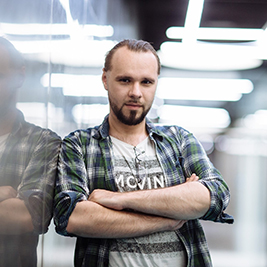Bank of Portraits / Kut Ivan, Maria, Yaroslav and Stephania

Kut Ivan, Maria, Yaroslav and Stephania
The Kut family lived in the Filvarky-Mali village (now - Brody, Lviv region). Ivan and Maria had their own wheat farm. The grain they gathered on the field, Kuts used to mill in the nearby Brody city, where the couple Yakiv and Sima Shlingers owned the mill. The business relationship between these two families already developed into friendly communication. The Shlingers even used to send their son Raphael to help the Kuts on the field.
On July 1, 1941, German troops captured Brody. The sinister rumors that Germans were oppressing the Jews spread over Western Ukraine before the beginning of the German-Soviet war. Soon after the occupation, they turned into a horrible truth. Two weeks after capturing the city, Germans gathered about 250 local Jews in the Jewish cemetery and shot them dead.
The occupants created a ghetto in the city, where all the Jews from Brody and the countryside were detained. The total number of Brody ghetto prisoners climbed to 7000. The Jews relocated there had to come through a humiliating procedure of registration. They were ordered to wear distinguishing armbands. The labor camps were established in the Brody countryside, where the Jews were forced to work. Those who were considered as “unemployable” were relocated to death camps such as Belzhets or Maidanek.
Similar tragic destiny befell thousands of the Jews of Halychyna. During the occupation, this region was attached to Polish General Government. The occupational administration there conducted the policy of hate and extermination of “inferior” nations and social groups systematically. The Lviv ghetto became the third-largest in Europe. Near it also existed the Yanivskyi camp. It combined functions of the concentration camp, labor camp, and transit camp. During the period of its existence, about 200 thousand people had come through it. Up to the end of the occupation, about 610 thousand Halychyna Jews became victims of the Holocaust.
Raphael Shlinger`s family was among them. His parents and four brothers were killed during one of the anti-Jewish actions in November 1942. Raphael himself survived just because he hid in the Kut’s dwelling. Soon after it, he decided not to risk his rescuers` lives and moved to the Brody ghetto. By that time, the Jewish underground organization had been acting in the ghetto. They even managed to perform few anti-German actions.
When in May 1943 Germans decided to exterminate the ghetto, members of the underground dared to resist. They even killed a few German soldiers and local Auxiliary policemen. In return, Germans and local collaborationists arranged the massacre of the ghetto prisoners. They forced Jews to come into the houses where shot them dead.
Policemen pushed Raphael Shliger along with other doomed ones into the building and started shooting. The young man was wounded and passed out. He regains consciousness sometime later when the massacre was over. He managed to flee the city unnoticed. Trembling of pain and fear he headed to the Kuts` home, as it was the only place, where he could account for assistance.
Ivan and Maria Kut met him gladly. They had done their best to get him back on his feet. Their children Yaroslav and Stephania also participated in his treatment. After Raphael`s recovering Maria and Ivan arranged a shelter for him in the attic of the barn. Twice a day Stephania or Yaroslav brought him food, water, or meds.
By the summer of 1944, the frontline came close to Brody. Near Filvarky Mali village appeared numerous German military units preparing for the defense. The risk for Raphael to be revealed increased strongly. That is why the young man decided to leave the house of his saviors. Up to the end of the occupation, he hid on the swamps or in the forests.
In 1947, Raphael moved to Israel. His communication with his saviors interrupted for a long time. However, Raphael did not forget about them. He renovated communication with the Kut family in 1992. By that time both Maria and Ivan Kut had passed away. Nevertheless, he managed to see once again one of his saviors. He met Stephania Kut in 1992 during her arrival to Israel.
On December 22, 1992, Ivan and Maria Kut (posthumously) and their children Yaroslav and Stephania were awarded by the honorable title “Righteous among the nations”.

Maksym Milevskiy
Kyiv
National museum of the History of Ukraine in the Second World War
-
fingerprintArtefacts
-
theatersVideo
-
subjectLibrary
